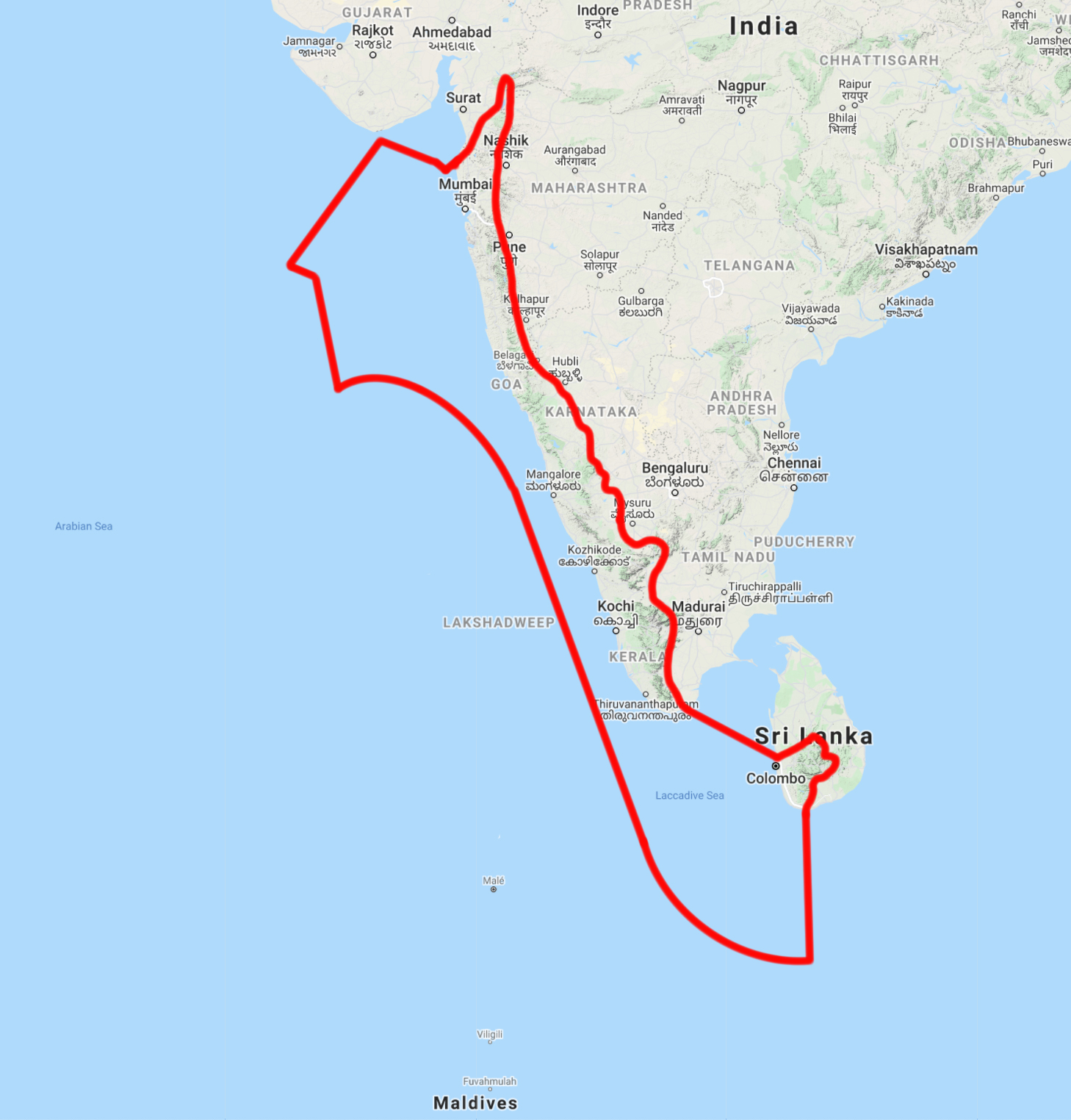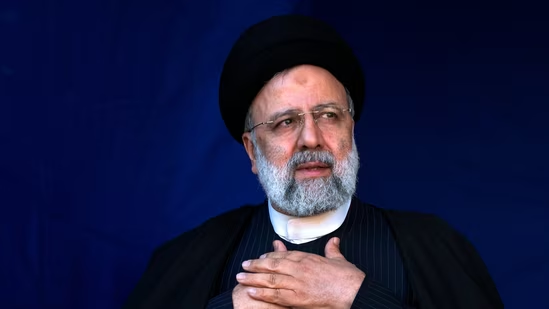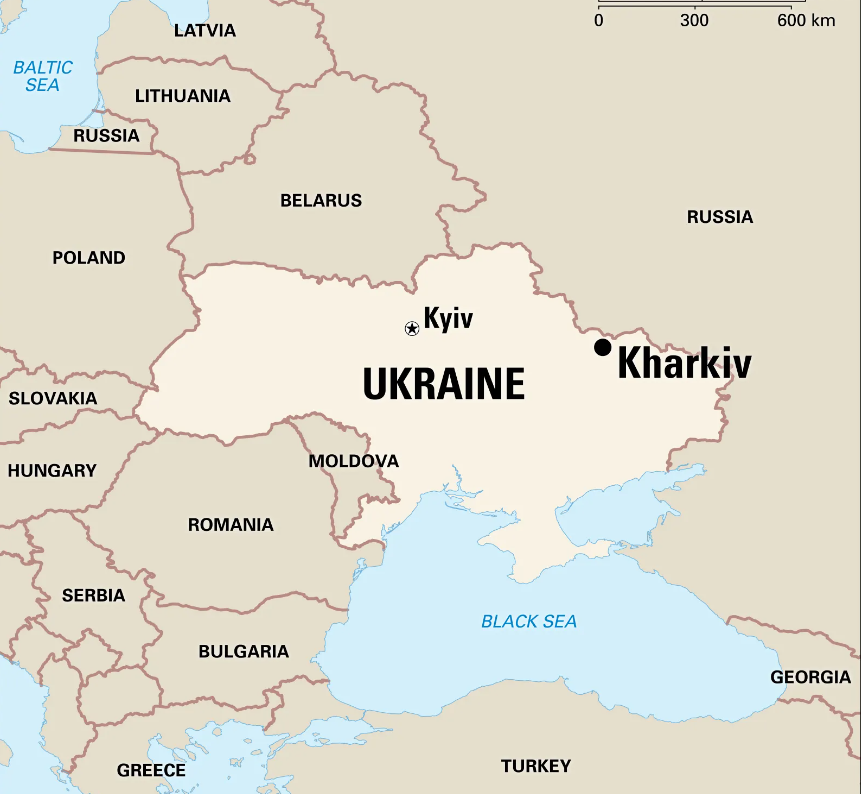Disenfranchisement of Undertrials in India
For Prelims: Lok Sabha elections, Right to vote, Representation of the People Act, of 1951, Fundamental rights, Election Commission of India
For Mains: Prisoner disenfranchisement laws in India, Voting rights to undertrials, Representation of the People Act, 1951.
Why in News?
As the 18th Lok Sabha elections are underway, more than four lakh undertrials in prisons nationwide are unable to exercise their right to vote due to a sweeping legal ban.
- The Representation of the People Act, of 1951 prohibits voting for individuals confined in prison, regardless of whether they are convicted or awaiting trial.
Note:
- An undertrial is a person who is currently on trial or who is imprisoned on remand whilst awaiting trial or a person who is on a trial in a court of law.
- The 78th Report of Law Commission also includes a person who is in judicial custody on remand during investigation in the definition of an 'undertrial'.
- Data from the Crime in India 2022 report reveals that approximately over 500,000 individuals, if not more, will be unable to exercise their voting rights in the ongoing 2024 Lok Sabha elections, by way of their confinement.
- As per National Crime Records Bureau (NCRB), in 2022 there were 4,34,302 undertrials across jails in India, comprising 76% of the total jail population of 5,73,220.
Why are Undertrials Barred from Voting?
- Section 62(5) of the Representation of the People Act:
- A person confined in a prison, under a sentence of imprisonment or transportation, or in the lawful custody of the police, shall not be allowed to vote at any election.
- Despite being prohibited from voting, a person whose name is on the electoral roll will not cease to be an elector.
- The prohibition to vote does not apply to a person subjected to preventive detention under any current law.
- This provision has been upheld by the Supreme Court, which has cited reasons such as resource constraints and the need to keep persons with criminal backgrounds away from the election scene.
- The Supreme Court recognises free and fair elections as part of the 'basic structure' of the Constitution but distinguishes that the right to vote (Article 326) is considered constitutional right rather than fundamental rights, subject to regulations imposed by laws such as the Representation of People Act, 1951.
- Article 326 of the Indian Constitution provides for adult suffrage. Every citizen over 18 has the right to vote unless disqualified on the grounds of non-residence, unsoundness of mind, crime or corrupt practices.
- The right to be elected is considered a statutory right.
- A person confined in a prison, under a sentence of imprisonment or transportation, or in the lawful custody of the police, shall not be allowed to vote at any election.
- Bar Against Contesting Elections Only After Conviction:
- Section 8 of the RPA, 1951 disqualifies a person from contesting elections only upon conviction for certain criminal offences, not merely upon being charged.
- The Supreme Court has rejected pleas to disqualify persons with criminal charges or those who file false affidavits, stating that only the legislature can alter the RPA, 1951.
- Exceptions to disqualification:
- The Election Commission of India can remove or reduce the period of disqualification under certain circumstances.
- A disqualified MP or MLA can still contest if their conviction is stayed on appeal to a higher court.
Historical Background of Prisoner Disenfranchisement
- English Forfeiture Act of 1870: It disqualified individuals convicted of treason or felony.
- The rationale behind this was that once someone was convicted of such serious offences, they forfeited their rights, including the right to vote.
- Government of India Act of 1935: Individuals serving sentences of transportation, penal servitude, or imprisonment were barred from voting.
- However, the RPA, 1951 adopted a broader approach to defining such disenfranchisement. It specified that individuals confined in prison, serving sentences of imprisonment or life or otherwise detained in lawful police custody, are ineligible to vote. This provision excludes only those in preventive detention.
Should Undertrials Have the Right to Vote?
| Arguments in Favour of Allowing Undertrials to Vote | Arguments Against Allowing Undertrials to Vote |
|
|
|
|
|
|
|
|
|
|
Legal Precedents Regarding Right to Vote in India
- Indira Gandhi v Raj Narain Case, 1975: The Supreme Court recognised that free and fair elections are a part of the ‘basic structure’ of the Constitution of India, and any laws or policies that would violate this principle could be struck down.
- Praveen Kumar Chaudhary V. Election Commission and Ors Case: The Delhi High Court opined that voting right is neither a constitutional nor a fundamental right but only a statutory right.
- The court upheld the constitutional validity of Section 62 (5), reaffirming that prisoners do not have the right to vote.
- People’s Union of Civil Liberties (PUCL) vs Union of India Case, 2003: The SC clarified that the right to vote is a constitutional right provided under Article 326 of the Indian Constitution. But the right to vote is not enumerated as a fundamental right.
- The right to make a choice by means of a ballot is indeed a part of the freedom of expression under Article 19(1)(a) of the Constitution.
- Anukul Chandra Pradhan, Advocate v. Union Of India & Ors Case, 1997: The Court upheld the constitutionality of Section 62(5) of the RPA, which disenfranchises prisoners.
- The Supreme Court cited three main justifications:
- Prisoners forfeit certain freedoms due to their conduct.
- Logistical challenges arise due to increased security needs for prisoners voting.
- The intention to exclude individuals with criminal backgrounds from the electoral process.
- The Supreme Court cited three main justifications:
Way Forward
- As electoral systems evolve and inclusivity becomes a priority, it's crucial to consider alternative methods for facilitating political participation among incarcerated individuals, such as mobile voting units or absentee ballots.
- Recognising the fundamental significance of voting rights for prisoners and upholding the aspiration of rehabilitation and reintegration, the focus should be on not further marginalising prison populations but providing them with opportunities to meaningfully participate in decision-making processes.
- Differentiate between convicts and undertrials when it comes to electoral rights.
- There is a need to incorporate the recommendation of the Swaran Singh Committee (1976) to include the duty to vote as a Fundamental Duty (FD) in the Indian Constitution and subsequently make the right to vote a fundamental right.
|
Drishti Mains Question: Q. Examine the historical context and evolution of prisoner disenfranchisement laws in India. How have these laws impacted the democratic participation of undertrials and convicts? |
UPSC Civil Services Examination, Previous Year Question
Q. With reference to India, consider the following statements: (2021)
- When a prisoner makes out a sufficient case, parole cannot be denied to such prisoner because it becomes a matter of his/her right.
- State Governments have their own Prisoners Release on Parole Rules.
Which of the statements given above is/are correct?
(a) 1 only
(b) 2 only
(c) Both 1 and 2
(d) Neither I nor 2
Ans: (b)
19th Session of United Nations Forum on Forest
For Prelims: United Nations Forum on Forests, UN's strategic plan for forests (2017-2030), UN Environment Programme (UNEP) , Food and Agriculture Organization (FAO)
For Mains: Key Takeaways from UNFF19, Revised National Forest Policy Recommendations by India at UNFF19.
Why in News?
Recently, India participated in the 19th Session of the United Nations Forum on Forests (UNFF) at the UN Headquarters in New York.
- India highlighted its significant advancements in forest conservation and sustainable forest management, leading to a consistent increase in forest cover over the past fifteen years.
What were the Key Takeaways from UNFF19?
- India presented its revised National Forest Policy emphasising forest fire prevention and management through recommendations and technological solutions.
- India suggests establishing universally accepted standards like Model Forests Act for forest certification programs for consistent and responsible forest management practices worldwide.
- The forum reviewed the UN's strategic plan for forests (2017-2030) and progress made in achieving global forest goals like enhancing forests' economic, social, and environmental benefits and securing finances.
- A UN report highlighted concerns about “Climatisation” of forests, driven by market-oriented approaches for carbon sequestration, reducing forests ecological and social values roles to mere carbon sinks.
- Indonesia presented its Forest and Other Land Use Net Sink 2030 strategy, and Malaysia committed to keeping at least 50% of its territory under tree cover.
What were India’s Highlighted Initiatives in Forest Management at UNFF19?
- India highlighted its success in using technology to manage forest fires.
- Examples include real-time fire monitoring via remote sensing, online fire reporting through web portals, and utilising ecological methods for restoration.
- Based on the forest inventory records, 54.40% of forests in India are exposed to occasional fires, 7.49% to moderately frequent fires and 2.40% to high incidence levels.
- Examples include real-time fire monitoring via remote sensing, online fire reporting through web portals, and utilising ecological methods for restoration.
- Globally, India ranks third in the net gain of average annual forest area between 2010 and 2020.
- India completed its 50 years of Project Tiger and 30 years of Project Elephant, demonstrating its commitment to species conservation and habitat protection.
- India introduced the 'Green Credit Program' to incentivise tree plantation and restoration of degraded forest lands to strengthen climate action initiatives.
- In 2023, India hosted the country-led Initiative under UNFF at Dehradun, attended by representatives from 40 countries and 20 international organisations, focusing on forest fire management and forest certification.
What is the United Nations Forum on Forests (UNFF)?
- About:
- The UNFF is an intergovernmental policy forum that promotes “management, conservation and sustainable development of all types of forests.
- UNFF was established in 2000 by the UN Economic and Social Council.
- The Forum has universal membership.
- Major Global Forest Related Events:
- 1992: UN Conference on Environment and Development adopts the “Forest Principles” and Agenda 21.
- 1995: Intergovernmental Panel on Forests (1995) was established to implement the Forest Principles from 1995 to 2000.
- 2000: UNFF is established as a functional commission of the UN Economic and Social Council.
- 2006: UNFF agrees on four Global Objectives on Forests.
- Reverse the loss of forest cover worldwide through sustainable forest management (SFM);
- Enhance forest-based economic, social and environmental benefits;
- Increase significantly the area of sustainably managed forests;
- Reverse the decline in official development assistance for SFM
- Mobilise increased financial resources for implementation of SFM.
- 2007: UNFF adopts the UN Non-Legally Binding Instrument on All Types of Forests (Forest Instrument).
- 2011: The International Year of Forests, “Forests for People”.
What are the Key Facts About the Indian Forest Policy?
- The National Forest Policy, 1894 (Colonial Focus):
- The policy prioritised timber production and custodial management.
- Forest classification was introduced, with emphasis on protecting commercially valuable areas.
- The National Forest Policy, 1952 (National Needs):
- Policy focused on national priorities like land-use management and environmental protection.
- Emphasised securing resources like timber, pasture, and fuelwood for national development.
- The National Forest Policy, 1988 (Ecological Security):
- Prioritised environmental stability, biodiversity conservation, and soil and water security.
- Advocated for large-scale afforestation and social forestry programs.
- Draft National Forest Policy, 2018 (Contemporary Challenges):
- Proposed revisions to address modern issues like climate change and human-wildlife conflict.
- Focuses on mitigating climate change and promoting public-private partnerships for forest restoration.
Forest in India:
- As per latest India State of Forest Report (ISFR) 2021, the total forest cover of the country is 7,13,789 square kilometre which is 21.72% of the geographical area of the country.
Conclusion
India's participation at UNFF19 showcased its success in forest conservation and sustainable management. India proposed a comprehensive national forest policy with technological solutions and called for international collaboration through a knowledge-sharing platform. While the High-Level Declaration remains under discussion, UNFF19 emphasised crucial steps towards achieving global forest goals.
|
Drishti Mains Question: Q. Discuss key Indian initiatives regarding forest management. Also, suggest ways for implementing the comprehensive forest management system in India. |
UPSC Civil Services Examination, Previous Year Question (PYQ)
Prelims:
Q1. The FAO accords the status of ‘Globally Important Agricultural Heritage System (GIAHS)’ to traditional agricultural systems. What is the overall goal of this initiative? (2016)
- To provide modern technology, training in modern farming methods and financial support to local communities of identified GIAHS so as to greatly enhance their agricultural productivity.
- To identify and safeguard eco-friendly traditional farm practices and their associated landscapes, agricultural biodiversity and knowledge systems of the local communities.
- To provide Geographical Indication status to all the varieties of agricultural produce in such identified GIAHS.
Select the correct answer using the code given below:
(a) 1 and 3 only
(b) 2 only
(c) 2 and 3 only
(d) 1, 2 and 3
Ans: (b)
Q2. At the national level, which ministry is the nodal agency to ensure effective implementation of the Scheduled Tribes and Other Traditional Forest Dwellers (Recognition of Forest Rights) Act, 2006? (2021)
(a) Ministry of Environment, Forest and Climate Change
(b) Ministry of Panchayati Raj
(c) Ministry of Rural Development
(d) Ministry of Tribal Affairs
Ans-(d)
Q3. A particular State in India has the following characteristics: (2012)
- It is located on the same latitude which passes through northern Rajasthan.
- It has over 80% of its area under forest cover.
- Over 12% of forest cover constitutes the Protected Area Network in this State.
Which one among the following States has all the above characteristics?
(a) Arunachal Pradesh
(b) Assam
(c) Himachal Pradesh
(d) Uttarakhand
Ans: (a)
Mains:
Q. “The most significant achievement of modern law in India is the constitutionalization of environmental problems by the Supreme Court.” Discuss this statement with the help of relevant case laws. (2022)
Police as Last Resort in Marital Dispute
For Prelims: Supreme Court, World Economic Forum's, Global Gender Gap Report 2023, Bhartiya Nyaya Sanhita, 2023, Dowry Prohibition Act 1961, Alternative Dispute Resolution (ADR)
For Mains: Police as a Last Resort in Domestic Disputes, Factors Contributing to Domestic Violence, Alternative Dispute Resolution (ADR)
Why in News?
Recently, the Supreme Court of India has advised caution to families facing marital trouble, stating that going to the police should be the “last resort”.
What are the Observations of the Supreme Court?
- About:
- A SC bench made some observations while ruling on a petition filed by the husband against the order of the Punjab and Haryana High Court which refused to quash criminal proceedings against him.
- The Supreme Court advises caution in using police intervention only in "very genuine cases of cruelty and harassment".
- Observations:
- The judgement cautions against the mechanical application of Section 498A (domestic cruelty) of the Indian Penal Code (IPC).
- A “complete" domestic violence case requires elements like criminal intimidation or causing hurt beyond trivial irritations.
- The court urges Parliament to review Sections 85 and 86 (up to 3 years) imprisonment of the Bhartiya Nyaya Sanhita, 2023 (similar to Section 498A IPC).
- Divorce is acknowledged as detrimental to a child's upbringing, especially when initiated hastily due to criminal proceedings.
- The judgement encourages High Courts to carefully consider all aspects and circumstances before deciding on pleas to quash criminal proceedings arising from marital issues.
Note:
- The Madhya Pradesh High Court ruled that unnatural sexual intercourse by a man with his wife will not be considered "rape" under Section 377 of IPC as the consent of the wife in such a case becomes immaterial because she was wedded to him.
- The court quashed an FIR registered by a wife against her husband, accusing him of having unnatural sex.
- Though marital rape is not an offence in IPC yet Kerala High Court in 2021 ruled that marital rape amounts to cruelty by husband to wife and a ground for divorce under the ambit of cruelty.
What are the Other Existing Ways to Resolve Matrimonial Disputes?
- Various mechanisms under the Alternative Dispute Resolution (ADR) can help in resolution of the matrimonial disputes speedily:
- Mediation: A neutral third party facilitates communication and negotiation between spouses to arrive at a mutually agreeable solution regarding matrimonial and family disputes.
- The Supreme Court in the K.Srinivas Rao vs D.A Deepa case emphasised mediation in matrimonial disputes.
- Conciliation: Similar to mediation, but the conciliator may also propose solutions and guide the couple towards an agreement.
- Arbitration: Here, a private arbitrator chosen by both parties hears arguments and delivers a binding decision on the dispute.
- Mediation: A neutral third party facilitates communication and negotiation between spouses to arrive at a mutually agreeable solution regarding matrimonial and family disputes.
- Also, various legal institutions provide for Alternative Dispute Resolution (ADR) as a more effective way to deliver justice due to the involvement of factors like emotions and social taboos in the marriage concept.
- Family Courts, established by the Family Courts Act, of 1984, promote conciliation and secure speedy settlement of disputes relating to marriage and family affairs and related matters.
- Gram Nyayalayas, established under the Gram Nyayalayas Act, 2008 provides for speedy and easy access to the matrimonial disputes in the rural areas of India.
- The Code of Civil Procedure, 1908 and the Hindu Marriage Act, 1955 also encourage reconciliation in family disputes.
Way forward
- Parliament should consider a review of Sections 85 and 86 of Bhartiya Nyaya Sanhita to prevent its further misuse or fake cases.
- The major focus should be towards the efforts of reconciliation before legal action to minimise police intervention in cases related to matrimonial disputes.
- There is a need to strengthen ADR mechanisms by proper training of mediators and conciliators in handling sensitive marital issues.
- There is a need to regulate and reform local and unregulated ADR mechanisms, such as Khap Panchayats (caste or community groups), which act as quasi-judicial bodies and pronounce harsh punishments based on age-old customs, even in sensitive marital issues.
- Focus should be given towards public awareness about legal rights and ADR options for peaceful dispute resolution.
- Proper mechanisms should be set up to provide accessible mental health services to couples facing marital discord, promoting communication and conflict resolution skills.
Conclusion
The Supreme Court's observation focuses on a nuanced approach to marital disputes. It encourages couples to prioritise reconciliation and tolerance over immediate police intervention or criminal proceedings. While acknowledging genuine cases of cruelty, the court aims to prevent the misuse of laws and safeguard the well-being of both spouses and children.
|
Drishti Mains Question: Q. Discuss the Supreme Court's observations on the involvement of police in matrimonial matters. Also, mention other existing ways to resolve matrimonial disputes in India. |
UPSC Civil Services Exam Previous Year Questions (PYQ)
Prelims:
Q. ‘Beijing Declaration and Platform for Action’, often seen in the news, is (2015)
(a) a strategy to tackle the regional terrorism, an outcome of a meeting of the Shanghai Cooperation Organization
(b) a plan of action for sustainable economic growth in the Asia-Pacific Region, an outcome of the deliberations of the Asia-Pacific Economic Forum
(c) an agenda for women’s empowerment, an outcome of a World Conference convened by the United Nations
(d) a strategy to combat wildlife trafficking, a declaration of the East Asia Summit
Ans: (c)
Mains:
Q. We are witnessing increasing instances of sexual violence against women in the country. Despite existing legal provisions against it, the number of such incidences is on the rise. Suggest some innovative measures to tackle this menace. (2014)
Q. How does patriarchy impact the position of middle-class working women in India? (2014)
Ethical and Procedural Lapses in Kerala Surgical Incident
For Prelims: Principles of Medical Ethics, Indian Penal Code (IPC)
For Mains: Ethical implications of medical negligence, Determinants and Consequences of Ethics in Human Action
Why in News?
Recently, a Kerala doctor was suspended for mistakenly performing tongue surgery instead of removing a child's extra finger.
- This occurred at the Government Medical College Hospital in Kozhikode. Legal action was taken against the doctor under Indian Penal Code (IPC) Sections 336 and 337 for endangering life.
- This highlights the critical need for strict adherence to medical protocols and ethics.
How do Ethics Guide Medical Practice?
- Ethical principles are foundational in medical practice, often guiding actions more than legal requirements. The four primary principles include:
- Autonomy: Respecting the patient's right to make informed decisions about their treatment by obtaining proper informed consent.
- The consent provided by the child’s parents was for a finger surgery, not a tongue surgery, thereby breaching the child’s autonomy.
- Beneficence: Acting in the best interests of the patient's health and well-being throughout the surgical process.
- Performing the wrong surgical procedure does not align with the patient’s needs or best interests.
- Non-maleficence: Avoiding harm to the patient. A provisionally or fully registered medical practitioner shall not willfully commit an act of negligence that may deprive the patient of necessary medical care.
- In this incident, the child was subjected to an unnecessary and harmful procedure on her tongue, which is a clear violation of this principle.
- Justice: Treating all patients fairly and equitably, without discrimination based on factors like religion, nationality, race, or social standing.
- This incident raises concerns about whether the child received fair treatment, especially in comparison to standards expected in medical care.
- Autonomy: Respecting the patient's right to make informed decisions about their treatment by obtaining proper informed consent.
- Hippocratic Oath: It is a cornerstone for fresh medical graduates and is recited during convocation ceremonies, binding them to a code of ethics. Encompassing principles outlined in the Indian Medical Council (Professional Conduct, Etiquette and Ethics) Regulations 2002, it pledges commitment to humanity's service, adherence to medical laws, respect for life, patient welfare prioritisation, confidentiality, gratitude to teachers, and collegial respect.
- This oath serves as a moral compass, guiding physicians to uphold the esteemed traditions and ethical standards of the medical profession.
What Ethical Principles are at Stake in Kerala Surgical Incident?
- Integrity and Objectivity: The doctor’s actions lacked integrity and objectivity, which are foundational values expected in any service, especially healthcare.
- Dedication to Public Service: Dedication to patient welfare is fundamental. The surgical mistake indicates a failure in this dedication.
- Physicians are expected to maintain a high standard of medical practice and care. The surgical error indicates a failure to uphold these duties and responsibilities.
- Patient Trust and Confidentiality: Trust is a critical component of the physician-patient relationship.
- Such incidents can erode trust not only between the patient and the physician but also in the broader healthcare system.
- Accountability and Ethical Governance: The doctor’s actions raise questions about accountability within the hospital’s governance structure.
- The incident highlights the ethical dilemmas faced in healthcare, emphasizing the need for strict adherence to ethical guidelines.
Way Forward
- Structured Communication Protocols: Implementing structured communication protocols, such as the SBAR (Situation-Background-Assessment-Recommendation) technique, can improve clarity and reduce errors.
- Ensuring informed consent involves a detailed explanation of the procedure, risks, benefits, and alternatives, along with verification of understanding.
- Strengthening Preoperative Verification: Adopting a mandatory “time-out” procedure immediately before surgery to confirm patient identity, surgical site, and planned procedure with the entire surgical team present.
- Transparent Investigation Process: Ensuring that investigations into incidents are transparent and the findings are shared with the public to restore trust in the healthcare system.
- Compensation: victims have the right to seek just compensation for the harm they've endured. This compensation should go beyond the immediate financial burden of medical bills. It should encompass both the tangible and intangible losses suffered.
- Promoting a Culture of Ethical Awareness: Initiate comprehensive training programs and workshops to educate healthcare professionals about ethical principles and their application in medical practice.
- Foster a culture of open dialogue and transparency within healthcare institutions to encourage discussions on ethical dilemmas and best practices.
- Legal and Ethical Codes of Conduct: Advocate for the implementation of legally implied codes of conduct that outline clear ethical expectations for healthcare professionals.
- Emphasise the importance of socially enforced codes of ethics that promote integrity, compassion, and professionalism in medical practice.
- Foster a supportive and collaborative work environment that values ethical conduct, professionalism, and patient-centred care.
|
Drishti Mains Question: Q. "Trust is the foundation of the physician-patient relationship, and incidents of medical negligence can erode this trust." Critically analyse this statement and suggest measures to restore public trust in the healthcare system. |
Lion-Tailed Macaques
Why in News?
Recently, the adaptation of the lion-tailed macaque (Macaca silenus) to Valparai's urban settings underscores the intricate relationship between wildlife and human activity, necessitating conservation measures.
What are the Key Characteristics of Lion-Tailed Macaques?
- Key Features:
- One of the smallest macaque species, it weighs 2–10 kg, has a body length of 42–61 cm, and a 25 cm tail with a black tuft more pronounced in males.
- The lion-tailed macaque's black hair, except for its distinctive light-coloured mane around its head and chin, earns it the nickname "beard ape."
- Known as “the wanderoo,” lion-tailed macaques are solitary and shy, staying within their familiar range in hierarchical groups of 10 to 20 members.
- Dominant males of the group emit loud, human-like ‘whoops’ to alert outsiders entering their territory.
- Habitat:
- This primate is native to the fragmented rainforests of Karnataka, Kerala, and Tamil Nadu in India's Western Ghats, with approximately 2,500 mature individuals remaining.
- The Valparai plateau, with its vast tea and coffee estates interspersed with forest patches, is part of the Anamalai Tiger Reserve and home to one of the 40-odd populations of lion-tailed macaques in the Western Ghats.
- Lion-tailed macaques, living mostly in the upper canopy of tropical moist evergreen forests, primarily feed on fruits and seeds but also consume leaves, buds, insects, and small vertebrates, thereby supporting their ecosystem's health.
- This primate is native to the fragmented rainforests of Karnataka, Kerala, and Tamil Nadu in India's Western Ghats, with approximately 2,500 mature individuals remaining.
- Conservation Status:
- IUCN Red List: Endangered
- CITES: Appendix I
- The Wildlife (Protection) Act, 1972: Schedule I
- Threats and Issues:
- The primary danger lies in the loss of their rainforest home, with up to 99% of Macaques' original territory vanishing due to extensive deforestation for timber, agriculture, and urbanisation.
- Behavioural shift towards human settlements, driven by a scarcity of natural food, habitat degradation, increased human activity, and poor waste management.
- Mitigation Measures:
- The Nature Conservation Foundation (NCF) has developed canopy corridors and implemented regulations to curb feeding and safely guide macaques across roads, aiming to lessen their reliance on human settlements and reduce roadkill incidents.
- The Tamil Nadu government has announced the establishment of a Tamil Nadu Endangered Species Conservation Fund with a corpus of Rs. 50 crore, which includes conservation efforts for the lion-tailed macaque.
- The Tamil Nadu Forest Department plans to conduct a study to estimate the macaque population and devise a comprehensive conservation strategy.
UPSC Civil Services Examination, Previous Year Questions (PYQs)
Prelims
Q. Which one of the following groups of animals belongs to the category of endangered species? (2012)
(a) Great Indian Bustard, Musk Deer, Red Panda and Asiatic Wild Ass
(b) Kashmir Stag, Cheetal, Blue Bull and Great Indian Bustard
(c) Snow Leopard, Swamp Deer, Rhesus Monkey and Saras (Crane)
(d) Lion-tailed Macaque, Blue Bull, Hanuman Langur and Cheetal
Ans: (a)
Q. With reference to India’s Desert National Park, which of the following statements are correct? (2020)
- It is spread over two districts.
- There is no human habitation inside the Park.
- It is one of the natural habitats of Great Indian Bustard.
Select the correct answer using the code given below:
(a) 1 and 2 only
(b) 2 and 3 only
(c) 1 and 3 only
(d) 1, 2 and 3
Ans: (c)
Tokyo Atacama Observatory
Why in News?
The University of Tokyo Atacama Observatory (TAO) has recently been inaugurated. It is now the highest astronomical observatory (altitude of 18,500 feet) in the world, even surpassing the famous Atacama Large Millimeter Array (ALMA), which stands at 16,570 feet.
What is the Tokyo Atacama Observatory?
- About: The TAO telescope, measuring 6.5 metres in optical-infrared capacity, is perched at an altitude of 18,500 feet on Mount Chajnantor in Chile's Atacama Desert.
- Co. Chajnantor is located in the Andes Mountains near the Atacama Desert.
- The Atacama Desert is one of the best locations on Earth for astronomical observations due to its high altitude, low humidity, and clear skies, which provide excellent conditions for studying the cosmos.
- The area's elevated altitude, sparse atmosphere, and consistently dry weather make it perfect for observing nearly the full spectrum of near-infrared wavelengths.
- Infrared radiation has a wavelength longer than visible light but shorter than microwaves.
- Instruments: TAO’s 6.5-meter telescope is equipped with 2 science instruments designed for infrared observations.
- SWIMS (Simultaneous-colour Wide-field Infrared Multi-object Spectrograph): Aimed at understanding the evolution of galaxies.
- MIMIZUKU (Mid-Infrared Multi-field Imager for gaZing at the UnKnown Universe): Used to study planet formation and the origin of materials.
What are Some Other Major Observatories in India and Around the World?
- India:
- Giant Metrewave Radio Telescope, Pune (Maharashtra)
- Kodaikanal Solar Observatory, Kodaikanal (Tamil Nadu)
- Indian Astronomical Observatory (IAO), Hanle (Ladakh)
- Other International Observatories:
- Mauna Kea Observatories (Hawaii, USA)
- Kitt Peak National Observatory (Arizona, USA)
- Mount Wilson Observatory (California, USA)
- Square Kilometre Array Observatory
Note: The Square Kilometre Array Observatory (SKAO) is an international organisation in charge of building the world's largest radio telescope.
- It will be a next-generation radio astronomy facility designed to study the Universe's evolution and answer profound questions about dark matter, dark energy, and the formation of galaxies.
- It will be composed of two large telescope arrays deployed in South Africa and Australia.
- Countries like the UK, Australia, South Africa, Canada, China, France, India, Italy, and Germany are involved in its development.
- India has played a crucial role in developing the Telescope Manager software, which controls the telescope's operations.
UPSC Civil Services Examination, Previous Year Question (PYQ)
Q. Consider the following (2008):
Assertion (A): Radio waves bend in a magnetic field.
Reason (R): Radio waves are electromagnetic in nature.
Which of the following is correct?
(a) Both A and R are individually true, and R is the correct explanation of A
(b) Both A and R are individually true, but R is not the correct explanation of A
(c) A is true but R is false
(d) A is false but R is true
Ans: (a)
Q. A layer in the Earth’s atmosphere called Ionosphere facilitates radio communication. Why? (2011)
- The presence of ozone cause the reflection of radio waves to Earth.
- Radio waves have a very long wavelength.
Which of the statements given above is/are correct?
(a) 1 only
(b) 2 only
(c) Both 1 and 2
(d) Neither 1 nor 2
Ans: (d)
World Telecommunication and Information Society Day
The Department of Telecommunications (DoT), celebrated World Telecommunication and Information Society Day on 17th May 2024, with the theme “Digital Innovation for Sustainable Development”.
- The day marks the anniversary of the founding of the International Telecommunication Union (ITU) on 17th May 1865, when the first International Telegraph Convention was signed in Paris.
- Centre for Development of Telematics (C-DOT), the premier Telecom R&D Centre of DoT announced special Initiatives “NIDHI” & “STAR Program” for the development of indigenous telecom solutions & technologies.
- STAR Program provides scholarship and mentorship support from C-DOT research leaders to PhD students.
- The Telecom industry in India is the 2nd largest in the world with a subscriber base of 1.179 Billion as of August 2023 (wireless + wireline subscribers).
-
-
- It is integral to the digital economy and is projected to reach around USD 1.5 billion by 2025-26, making up approximately 15% of the GDP.
-
Read more: India’s Booming Telecom Sector, Transformative Impacts of Telecommunications Act 2023, 6G Technology
Indian Army Gets AK-203 Rifles
The Indian Army has received the first batch of 27,000 units of Russian AK-203 assault rifles.
- Under a contract signed between India and Russia in July 2021, over 6.1 lakh AK-203 assault rifles are to be manufactured in India with technology transfer from Russia.
- The joint venture Indo-Russian Rifles Private Limited (IRRPL) was established at Korwa in Uttar Pradesh in 2019 for this purpose.
- It was set up between the erstwhile Ordnance Factory Board [now Advanced Weapons and Equipment India Limited (AWEIL) and Munitions India Limited (MIL)] from India and Rosoboronexport (RoE) and Kalashnikov concern of Russia.
- India is progressively making the AK-203 rifles within the country, aiming to reach 70% domestic content in just 2 years. Currently, around 25% of the rifle's parts are manufactured locally.
- The full-scale production with 100% localisation of rifles is expected to be reached within 2-3 years.
- The Indian Army has been phasing out the INSAS (Indian National Small Arms System) rifles in favour of more advanced weaponry.
India Observes State Mourning for Iran President
The Government of India has announced a day of state mourning on 21st May 2024, following the tragic death of Iranian President Seyed Ebrahim Raisi and other senior officials in a helicopter-related incident.
- As part of the state mourning, the national tricolour will be flown at half-mast at all public buildings across the country as a mark of respect for the late Iranian president, and no official entertainment will take place during this period.
- State mourning in India is observed under specific guidelines provided by the Ministry of Home Affairs. These guidelines are part of the broader set of rules and conventions known as the Flag Code of India, 2002.
- The Prime Minister of India expressed grief on Raisi’s death and acknowledged his significant contribution to India-Iran ties.
- During President Raisi's term, Iran joined the BRICS grouping in Johannesburg in 2023, alongside Saudi Arabia.
Massive Fire at Union Carbide Plant
Recently, a massive fire occurred at the Union Carbide factory in Bhopal, which was shut down after the Bhopal Gas Tragedy of 1984.
- The locals expressed their fear about the potential effects of toxic smoke on their bodies.
- The Bhopal gas tragedy was one of the worst industrial accidents in history that occurred on the night of 2-3 December 1984 at the Union Carbide India Limited (UCIL) pesticide plant.
- It exposed people and animals to the highly toxic gas methyl isocyanate (MIC), causing immediate and long-term health effects and deaths.
- The cause of the gas leak is debated between corporate negligence and employee sabotage.
- As a result several laws were passed related to disaster and environmental protection in India.
- Bhopal Gas Leak Disaster Act of 1985,
- Environment Protection Act of 1986,
- Public Liability Insurance Act of 1991,
- Civil Liability for Nuclear Damage Act of 2010
Kharkiv and Kyiv Region
Amid the ongoing Russia-Ukraine war, Russia has started a military operation by sending troops across the border into the northeastern Kharkiv region of Ukraine.
- Ukraine initially pushed back Russian forces from the region in late 2022, but is now facing a new offensive due to ammunition and manpower shortages.
- The Russia- Ukraine war has been raging for two years, causing widespread displacement, impacting Europe's geopolitical landscape, and disrupting the global economy.
- Ukraine is located in eastern Europe, the second largest on the continent after Russia. The capital is Kyiv, located on the Dnieper River in north-central Ukraine.
- Kharkiv city lies in northeastern Ukraine. It lies at the confluence of the Uda, Lopan, and Kharkiv rivers.
Read more: Russia-Ukraine Conflict

 Final.png)








